And now Hemingway has sauces inspired by his life and travels. What next? Leisure wear perhaps.
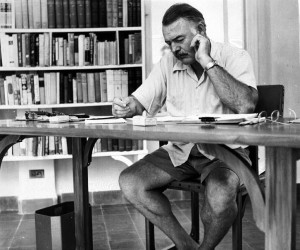
All about Hemingway
#Hemingwayand drinking
I am not sure that I agree. This study/typecasting has the “Hemingway” type as one who changes little when drinking and whose intellect is not significantly impacted. My reading suggests that Hemingway was fairly shy and thoughtful when sober. When drinking . . . not so much. But take a look.

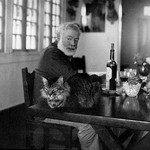

• I knew that Hemingway’s books were banned in various communities and countries. The below are added nuances.
For Whom the Bell Tolls (1940) by Ernest Hemingway. The story considers suicide in preference to capture during the Spanish Civil War. In 1940, the U.S. Postal Service refused to let it go through the mail.

Hemingway lived and wrote in Piggott, northeast of Jonesboro, around 1930. He worked on another of his frequently banned books, A Farewell to Arms (1929) while in Piggott, where he is remembered by the Hemingway-Pfeiffer Museum and Educational Center.
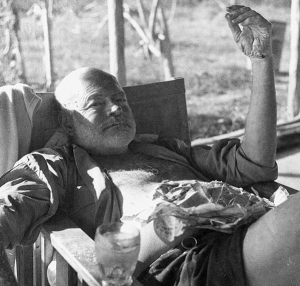
#Hemingwayexhibit
Oh, the fun of this. About half of the items in the exhibit are being borrowed from the Kennedy Library (Boston) Collection. Some were private letters so don’t be too hard on him. If letters you wrote to a close friend or lover were made public .they might not include your most eloquent turns of phrase. If you can manage, this will be a great stroll through Hemingway lore and history.
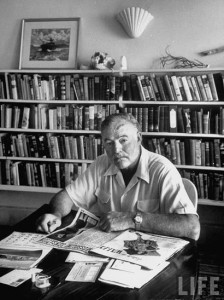

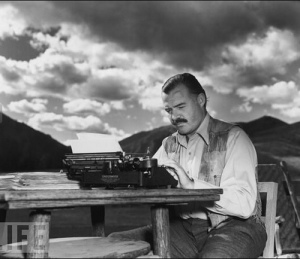
#Hemingwayscatholicism
#Hemingwaysfuneral
#HemingwayandPauline
Ernest Hemingway was born a Protestant but converted to Catholicism when he married Pauline Pfeiffer, his second Wife. Pauline was an observant Catholic who took her religion seriously. Hemingway, who was never observant, but arguably always religious told Gary Cooper that becoming a Catholic was one of the best things he’d done in his life. Gary was also Catholic and hem and Coop had a life long bond. (Rent or buy the movie The True Gen about their touching lifelong friendship. They died 6 weeks apart: Coop of cancer and Hem of a self inflicted gun shot wound.) I am excerpting here from an interview with a Hemingway scholar, H. R. Stoneback (Known as Stoney) on this point and on the concept of a pilgrimage. He is interviewd by Allie Baker of The Hemingway Project.

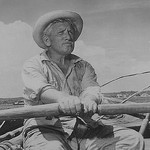
AB: In your essay, “Pilgrimage Variations: Hemingway Sacred Landscapes,” you come to the conclusion that “The ever-recurring center of Hemingway’s work . . . is the notion of pilgrimage.” You write; “The Sun Also Rises, far from being the chronicle of aimless lost generation that it is often taken for, is Hemingway’s first meditation on the theme of pilgrimage.” This is a new idea for readers who have not read your work. Can you elaborate on this? .
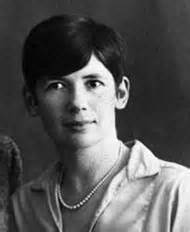
Since we now live in an insistently secular culture, where religious concerns are often seen as an embarrassment, it may be useful to state certain things in a straight declarative manner, more directly than I would usually say: 1) Hemingway, raised a Protestant, takes religious questions seriously from the beginning; (and I mean specifically religious questions not vaguely spiritual meanderings); 2) Hemingway, an adult convert to Catholicism, takes his Catholicism seriously; 3) Pilgrimages, specific historical Catholic Pilgrimages, pervade his work in his usual understated and allusive style, and often the deepest and foundational layers of the submerged iceberg of his story and his style are religious and Catholic and Pilgrimage-centered; 4) The Sun Also Rises, for example, has many explicit and implicit references to specifically Catholic Pilgrimage sites–from Sainte Odile to Lourdes to Roncevaux to Santiago de Compostela; 5) When Hemingway the recent formal Catholic convert goes on his honeymoon with his very Catholic bride Pauline to the pilgrimage country of the Camargue, they are pilgrims; you could say they are making a lower-case pilgrimage to the Mediterranean beaches and an upper-case specifically Catholic Pilgrimage to the sacred place of Les Saintes-Maries-de-la-Mer; 6) True pilgrims are never “lost,” certainly never “aimless” for no one is more “aimed” with a fixed, set destination than a pilgrim; Jake Barnes, the Catholic Pilgrim, knows exactly where he is going and why.
AB: When and where do you think Hemingway’s Pilgrimage started? HRS: . When and where did Hemingway’s Pilgrimage start? Hard to say exactly. Maybe when he first lit candles in a Catholic church in Petoskey; when, after his wounding, he was given Last Rites by a Catholic priest on an Italian battlefield; when he went to the great Cathedral of Chartres and changed the title of his novel from The Lost Generation to The Sun Also Rises; when he started carrying and wearing (as he did much of his life) Catholic religious medals; certainly, by the time of the writing of The Sun Also Rises and his Pilgrimages to Les Saintes-Maries-de-la-Mer and Santiago de Compostela soon after, he is a confirmed Catholic Pilgrim.
This is me, Christine, again. Below is a portion of the New York times Obituary of Ernest Hemingway
Ketchum, Idaho, July 4 (UPI)–Ernest Hemingway will be buried under a blanket of red roses; beside one of his closest friends. The grave was dug today in Ketchum Cemetery beside that of Taylor Williams, a hunting and fishing guide who was Mr. Hemingway’s frequent companion for twenty years. He died in 1959.
A simple graveside service was planned. The time was left uncertain pending the arrival of Mr. Hemingway’s son Patrick, who has been hunting in Africa. The services may be held tomorrow.
The Rev. Robert J. Waldemann, Roman Catholic pastor of St. Charles Church in Hailey, Idaho, and of Our Lady of the Snows in Ketchum, will conduct the services. Father Waldemann said that there would be no formal Catholic services. He said there would be no mass and probably no rosary, but he said that the matter of accident or suicide had no bearing on the funeral. “We pass no judgement on that and asked no questions,” he said.
There still was no official decision–and there may never be–as to whether the death of the writer early Sunday from the blast of a 12-gauge shotgun had been an accident or suicide. However, the fact that Mr. Hemingway had been divorced would bar him from a Catholic Church funeral. Catholic sources said there was nothing improper in a Catholic priest saying prayers at graveside.
RIP, Mr. Hemingway.
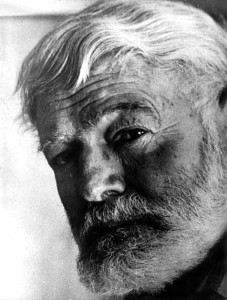
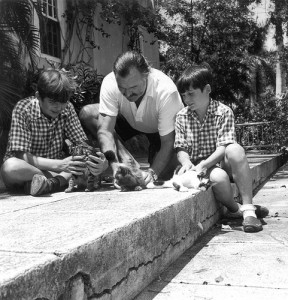
#Hemingwaycats.
So, what could be controversial about some multi-toed cats living peacefully in Key West? Well a lot apparently. For four years the Hemingway Museum has been in litigation with the town which wanted the cats caged saying they exceeded limits and thus constituted an animal exhibit and needed to be licensed and caged. Hmm. That seems a stretch. I am happy to report that the Hemingway Museum won the case and an exception/exemption was noted by the Key West City Commission, which voted to exempt the Hemingway cats from federal rules, calling them “animals of historic, social and tourism significance.” They are, said city officials, “an integral part of the history and ambiance of the Hemingway House.” Well, who didn’t know that? Full article below.
Polydactyl cats have extra toes on one or more paws. They are often called Hemingway cats.


My friend, Trudy, sent me this great link to photos of Hemingway’s homes in Key West and Cuba. The shots are wonderful. Take a look when convenient. Best, Christine